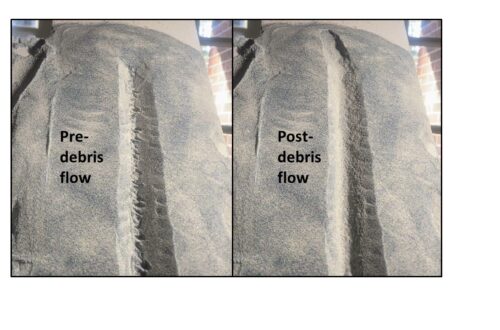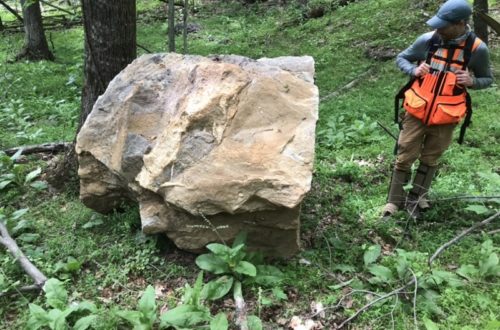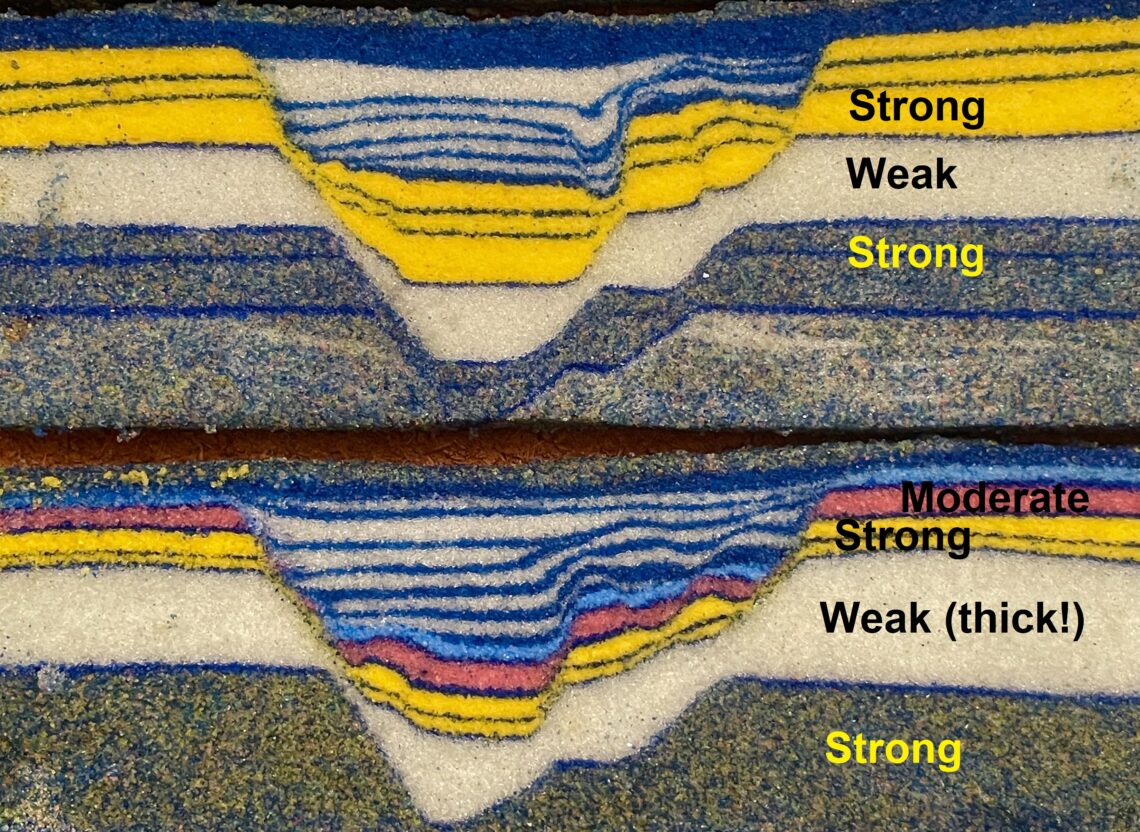
Formation of anticlines and synclines above sandbox model normal faults with changing dip
by Philip S. Prince
While Earth’s most dramatic geologic fold structures result from compressional deformation, extensional deformation can also produce closed, upright folds–in both the real world and in physical models. Extensional anticlines (particularly when upright and generally unfaulted) are always more subtle than their compressional cousins, but extensional synclines can be very tight with very steep limbs, particularly when pronounced “space problems” develop in the fold hinge. The image below compares extensional folding (top) with compressional folding in two sandbox models made from mechanically similar sandpacks deformed in different ways.
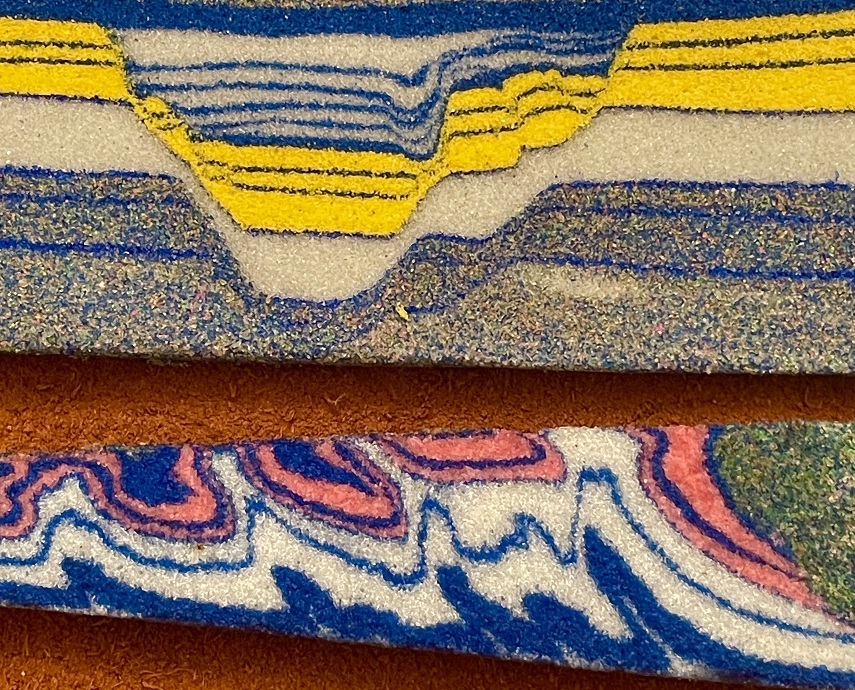
Extensional folding seems to get less hype in the world of geology visuals, but extensional fold structures are extremely significant in the world of hydrocarbon exploration and subsurface storage. Analog models readily produce illustrative extensional folds that develop for the same reasons as real-world structures (see the end of the post). The image below shows a suite of sandbox models I made with the development of extensional folding in mind (or lack of folding, in the top model) . With a close look, subtle anticlines, and one much less subtle syncline, are visible in all but the top model. There’s a reason for this, discussed below.
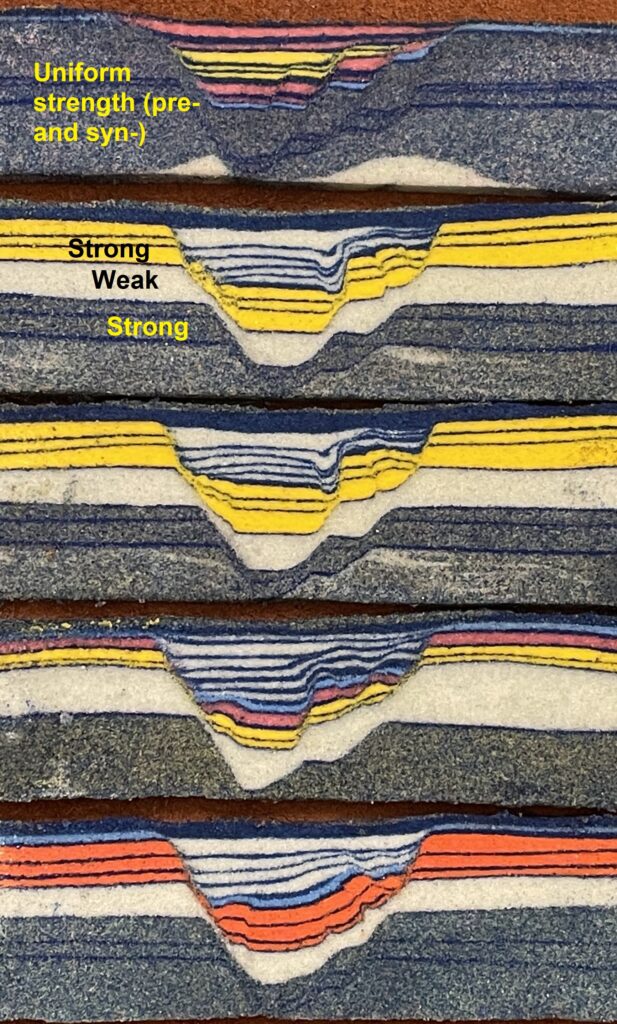
All of the folding developed in the models is some sort of expression of forced, fault-bend folding, which develops when the hanging wall makes geometric adjustments to match changing footwall shape. “Changing footwall shape” basically means changes in fault dip. As a hanging wall block moves across a locally flattening or steepening fault, it must constantly change its shape to prevent void development and match the footwall shape. This concept has been illustrated and GIF’d a few times on this blog page already, with the GIF below being my newest and simplest expression of the idea.
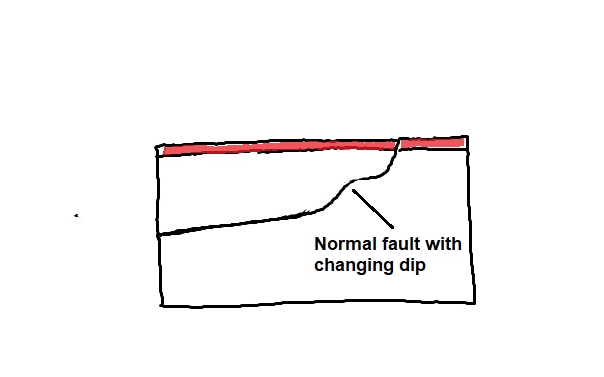
In the first frame that shows hanging wall movement, voids or open spaces develop at the steep parts of the fault. Such void development is impossible at tectonic scales (miles/kilometers of rock), with the hanging wall steadily collapsing as it moves across dip changes to maintain contact with the underlying fault plane/footwall. Fault flattening forces collapse and stretching in the hanging wall, while a zone of fault steepening after a flat forces a space problem that may result in development of an accommodation fault with local reverse-sense movement. You can see examples of these accommodation faults in the second image in the post, particularly in the orange model at the bottom.
Fundamentally, change in fault dip is a key driver of folding in the extensional regime. Since granular media with different internal frictional behavior produce different model fault angles, extensional folding can be induced by constructing models with different strengths at different depths. No rigid, non-granular blocks are necessary. Mechanical contrast and few degrees of difference in fault dip is adequate, as shown below.
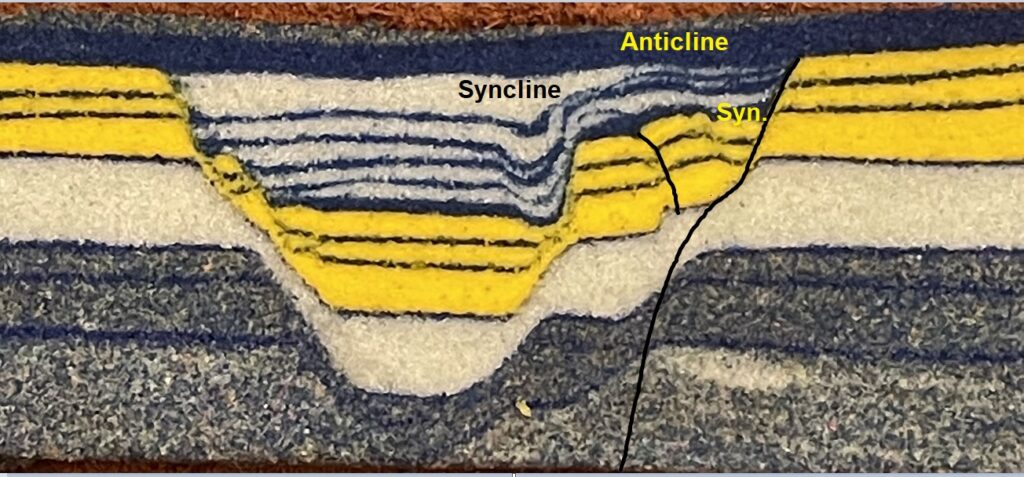
Analog models using contrasting materials (here, white glass microbeads, yellow and orange dolomite sand, and pink quartz sand) produce structures that are a direct reflection of mechanical stratigraphy. The upper model in the image below uses a thick, strong section (yellow) above a weak layer to produce a distinct structural style, including an impressively tight syncline in the growth section. The lower model uses a combination of weaker strata above a thick, weak horizon in the pre-extension section to create a broad zone of undulating folding in the white/blue growth sequence. Model setup and deformation was effectively identical; only the mechanical stratigraphies are different.
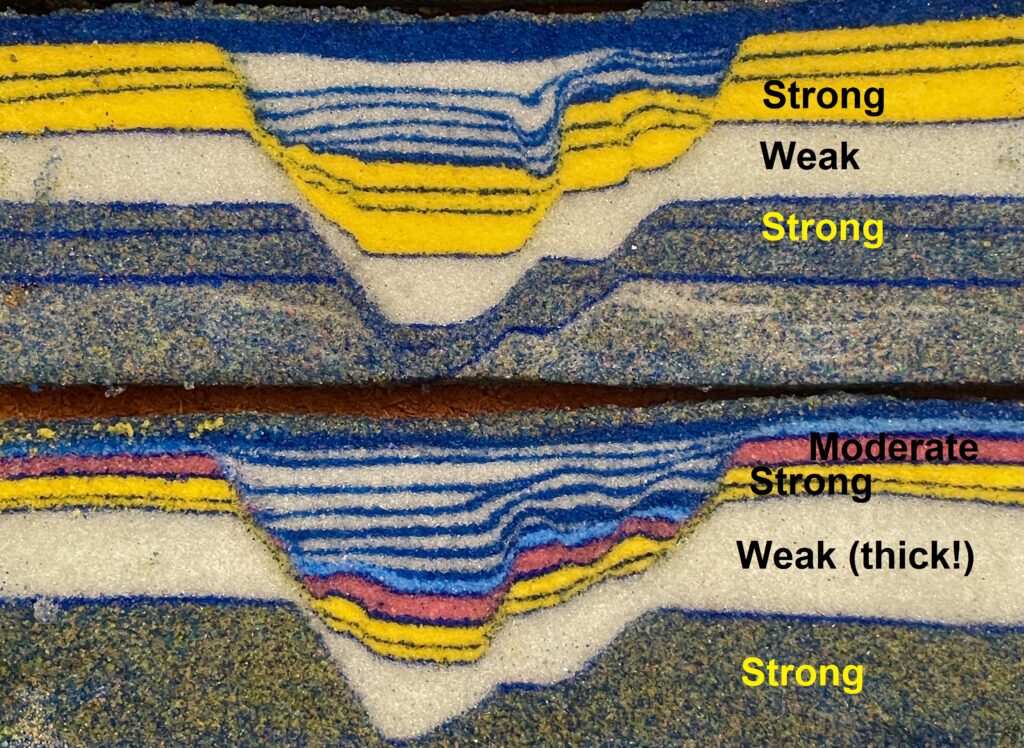
The orange sand in the lower model of the following image has mechanical properties somewhere between the yellow and pink sands in the other models. The resulting structural style is also transitional, lacking both the extreme syncline formation of the thick yellow model and the broad, undulating zone in the model containing pink sand. Instead, two anticlines (indicated by red arrows) formed in the growth section above the zone of fault (black line) dip decrease within the weak white layer. Note the little reverse sense-fault (see the GIF) and the upright anticline against the left side basin-bounding fault.
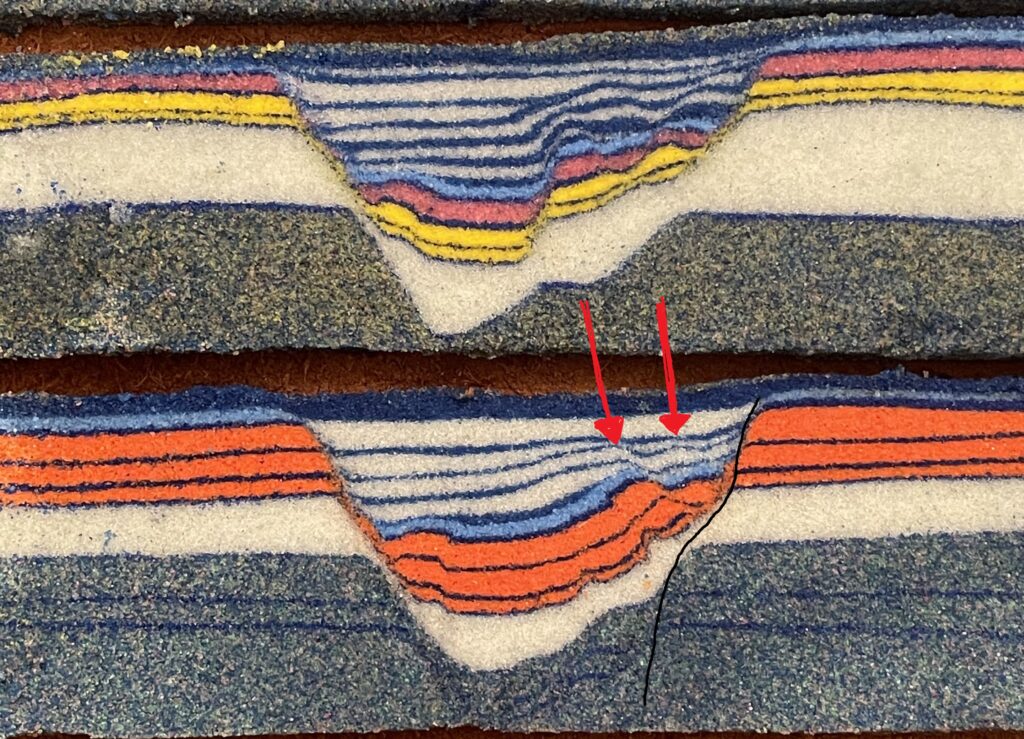
I have never had success in developing this sort of extensional folding clearly against a clear glass sidewall, but the process is visible when the models are viewed from the top. The images below indicate the position of cross section features on plan view images of the deforming models.
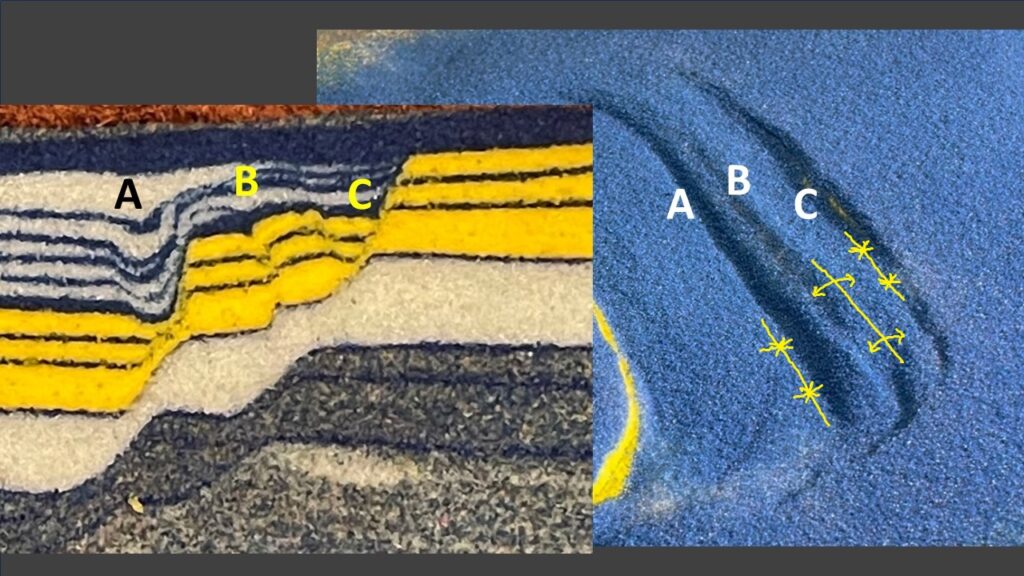
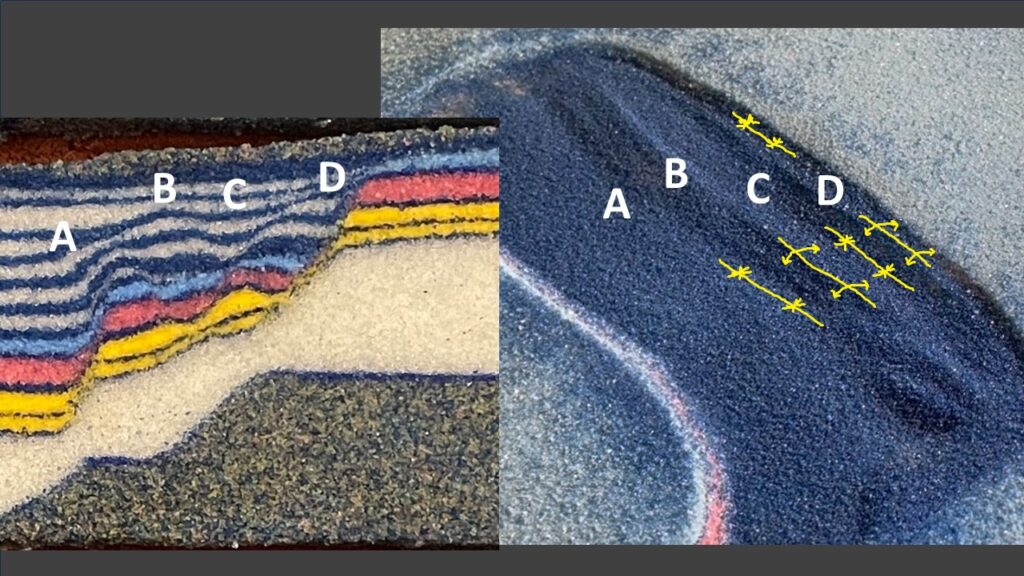
These are simple, direct extension models; they use a moving baseplate that does not stretch to create more distributed extension and a “domino block” structural style. Despite their simple setup, the models do create structures that are reminiscent of well-known, real-world extensional anticlines, as shown below. Note the association between the position of the real-world hanging wall anticline below and the flattening of its associated normal fault. The white arrow in the model image indicates the crest of the main hanging wall anticline. “Real-world” image source here…
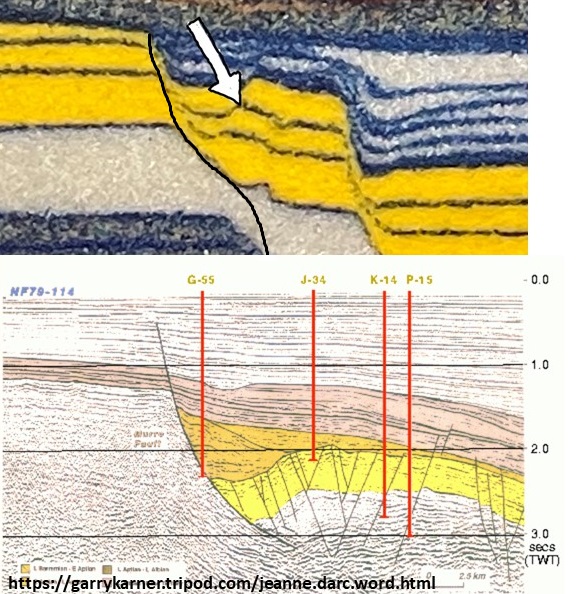
I am very much a fold-thrust belt kind of guy, but extensional structure is always interesting to consider. I think the elegantly simple relationship between fault dip and hanging wall deformation is one of the most classic and illustratable concepts in all of geology, which probably explains why there are a number of extensional fold posts on this blog!


